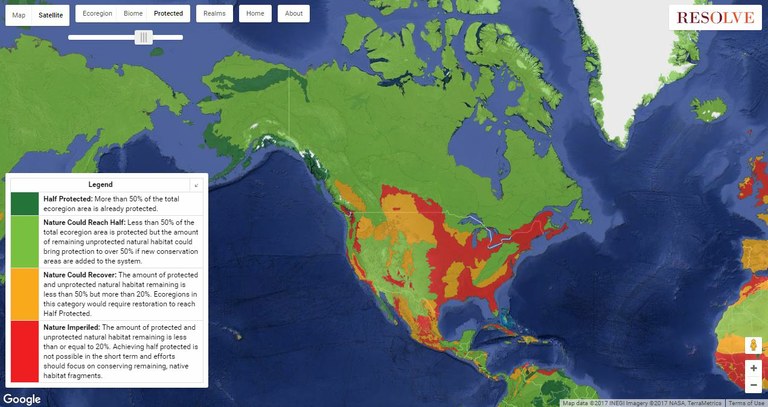MEDIA RELEASE
WASHINGTON, D.C. — A new study published in BioScience today examines a bold new approach to halting the world’s extinction crisis through a strategy to protect 50 per cent of the Earth’s land mass.
Many vertebrate species have vanished over the past five decades or have become critically endangered and the rate of extinction is accelerating. If habitat conversion continues unabated, key ecosystems could collapse, disrupting the biosphere upon which we all — humans and wildlife — depend.
“Our paper shows that protecting half the Earth and saving the diversity of life is still feasible if we act now. The paper sets out an ambitious but achievable approach,” says lead author Dr. Eric Dinerstein.
But why 50 per cent?
“In order to achieve comprehensive biodiversity conservation, many in the scientific community have empirically shown that an average target of 50 per cent protected is required to sustain habitats and ecosystems. Currently, about 15 per cent of the globe’s land mass is protected; this figure is not based on science and is insufficient,” says co-author Dr. Reed Noss.
Harvey Locke, co-founder of Nature Needs Half and Yellowstone to Yukon Conservation Initiative (Y2Y), is among the co-authors.
“From Yellowstone to Yukon to the rest of our planet we need to protect at least half of the landscape in an interconnected way for nature to meet its needs and to ensure human well-being,” says Locke.
“For the survival of chimpanzees and other wildlife around the world we need to dramatically scale up conservation efforts,” says Dr. Jane Goodall, DBE, founder of the Jane Goodall Institute and UN Messenger of Peace. “This paper shows how it could be possible.”
The groundbreaking study uses a new map of the world’s 846 ecoregions, improving on a 2001 version and analysis that remains one of the most widely cited papers in the field of conservation biology.
The new study highlights 98 ecoregions (12 per cent) that already have at least half of the land areas protected for the conservation of nature. Another 313 ecoregions fall short of half-protected but have sufficient unaltered habitat remaining to protect the target.
“Overall, this is a good news story,” says Dr. Thomas Lovejoy, of George Mason University and the UN Foundation, who is not affiliated with the study. “Protecting half is still possible in the majority of the world’s species-rich subtropical and tropical broadleaf forests.”
Covering only 14 per cent of the Earth’s surface, this biome supports more than half of life on Earth and, according to the study, 140 of the ecoregions in this biome are either already half-protected or have sufficient habitat to do so.
In contrast, the situation is dire for one-quarter of the world’s ecoregions, where an average of only 4 per cent natural habitat remains.
“In these places, we need to be focused on saving the last remnants in the short term and then massive restoration over the next 30 years,” stresses Dinerstein.
The authors call on advocates and leaders to protect half the terrestrial realm by 2050.
Background and additional resources:
- Read the full paper An Ecoregion-Based Approach to Protecting Half the Terrestrial Realm
- An interactive ecoregion map of the world with protection status
- A blog post calling on leaders and advocates to create a Global Deal for Nature and protect half the terrestrial realm by 2050.


